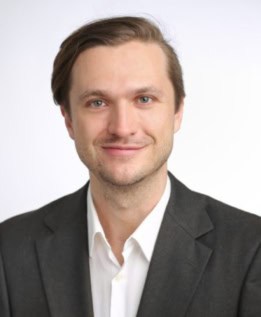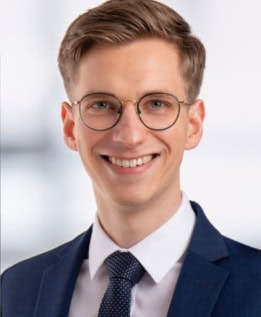Feeling Anti-Social When You’re Sick? Signals to the Brain Are Responsible





WARSAW, Poland — The European Space Agency and Lithuanian space startup Astrolight are building the first optical ground station (OGS) in Kangerlussuaq, Greenland as a way to bolster ground communications and to help protect against signal interference or piracy. Based on laser technology, the station is to provide greater space-to-ground connectivity than radio frequency (RF), […]
The post Lithuanian space company Astrolight launches Greenland optical ground station project appeared first on SpaceNews.
UK artist Alison Stott has created a new glass and light artwork – entitled Naturally Focused – that is inspired by the work of theoretical physicist Michael Berry from the University of Bristol.
Stott, who recently competed an MA in glass at Arts University Plymouth, spent over two decades previously working in visual effects for film and television, where she focussed on creating photorealistic imagery.
Her studies touched on how complex phenomena can arise from seemingly simple set-ups, for example in a rotating glass sculpture lit by LEDs.
“My practice inhabits the spaces between art and science, glass and light, craft and experience,” notes Stott. “Working with molten glass lets me embrace chaos, indeterminacy, and materiality, and my work with caustics explores the co-creation of light, matter, and perception.”
The new artwork is based on “caustics” – the curved patterns that form when light is reflected or refracted by curved surfaces or objects
The focal point of the artwork is a hand-blown glass lens that was waterjet-cut into a circle and polished so that its internal structure and optical behaviour are clearly visible. The lens is suspended within stainless steel gyroscopic rings and held by a brass support and stainless stell backplate.
The rings can be tilted or rotated to “activate shifting field of caustic projections that ripple across” the artwork. Mathematical equations are also engraved onto the brass that describe the “singularities of light” that are visible on the glass surface.
The work is inspired by Berry’s research into the relationship between classical and quantum behaviour and how subtle geometric structures govern how waves and particles behave.
Berry recently won the 2025 Isaac Newton Medal and Prize, which is presented by the Institute of Physics, for his “profound contributions across mathematical and theoretical physics in a career spanning over 60 years”.
Stott says that working with Berry has pushed her understanding of caustics. “The more I learn about how these structures emerge and why they matter across physics, the more compelling they become,” notes Stott. “My aim is to let the phenomena speak for themselves, creating conditions where people can directly encounter physical behaviour and perhaps feel the same awe and wonder I do.”
The artwork will go on display at the University of Bristol following a ceremony to be held on 27 November.
The post ‘Caustic’ light patterns inspire new glass artwork appeared first on Physics World.
WiFi networks could pose significant privacy risks even to people who aren’t carrying or using WiFi-enabled devices, say researchers at the Karlsruhe Institute of Technology (KIT) in Germany. According to their analysis, the current version of the technology passively records information that is detailed enough to identify individuals moving through networks, prompting them to call for protective measures in the next iteration of WiFi standards.
Although wireless networks are ubiquitous and highly useful, they come with certain privacy and security risks. One such risk stems from a phenomenon known as WiFi sensing, which the researchers at KIT’s Institute of Information Security and Dependability (KASTEL) define as “the inference of information about the networks’ environment from its signal propagation characteristics”.
“As signals propagate through matter, they interfere with it – they are either transmitted, reflected, absorbed, polarized, diffracted, scattered, or refracted,” they write in their study, which is published in the Proceedings of the 2025 ACM SIGSAC Conference on Computer and Communications Security (CCS ’25). “By comparing an expected signal with a received signal, the interference can be estimated and used for error correction of the received data.”
An under-appreciated consequence, they continue, is that this estimation contains information about any humans who may have unwittingly been in the signal’s path. By carefully analysing the signal’s interference with the environment, they say, “certain aspects of the environment can be inferred” – including whether humans are present, what they are doing and even who they are.
The KASTEL team terms this an “identity inference attack” and describes it as a threat that is as widespread as it is serious. “This technology turns every router into a potential means for surveillance,” says Julian Todt, who co-led the study with his KIT colleague Thorsten Strufe. “For example, if you regularly pass by a café that operates a WiFi network, you could be identified there without noticing it and be recognized later – for example by public authorities or companies.”
While Todt acknowledges that security services, cybercriminals and others do have much simpler ways of tracking individuals – for example by accessing data from CCTV cameras or video doorbells – he argues that the ubiquity of wireless networks lends itself to being co-opted as a near-permanent surveillance infrastructure. There is, he adds, “one concerning property” about wireless networks: “They are invisible and raise no suspicion.”
Although the possibility of using WiFi networks in this way is not new, most previous WiFi-based security attacks worked by analysing so-called channel state information (CSI). These data indicate how a radio signal changes when it reflects off walls, furniture, people or animals. However, the KASTEL researchers note that the latest WiFi standard, known as WiFi 5 (802.11ac), changes the picture by enabling a new and potentially easier form of attack based on beamforming feedback information (BFI).
While beamforming uses similar information as CSI, Todt explains that it does so on the sender’s side instead of the receiver’s. This means that a BFI-based surveillance method would require nothing more than standard devices connected to the WiFi network. “The BFI could be used to create images from different perspectives that might then serve to identify persons that find themselves in the WiFi signal range,” Todt says. “The identity of individuals passing through these radio waves could then be extracted using a machine-learning model. Once trained, this model would make an identification in just a few seconds.”
In their experiments, Todt and colleagues studied 197 participants as they walked through a WiFi field while being simultaneously recorded with CSI and BFI from four different angles. The participants had five different “walking styles” (such as walking normally and while carrying a backpack) as well as different gaits. The researchers found that they could identify individuals with nearly 100% accuracy, regardless of the recording angle or the individual’s walking style or gait.
“The technology is powerful, but at the same time entails risks to our fundamental rights, especially to privacy,” says Strufe. He warns that authoritarian states could use the technology to track demonstrators and members of opposition groups, prompting him and his colleagues to “urgently call” for protective measures and privacy safeguards to be included in the forthcoming IEEE 802.11bf WiFi standard.
“The literature on all novel sensing solutions highlights their utility for various novel applications,” says Todt, “but the privacy risks that are inherent to such sensing are often overlooked, or worse — these sensors are claimed to be privacy-friendly without any rationale for these claims. As such, we feel it necessary to point out the privacy risks that novel solutions such as WiFi sensing bring with them.”
The researchers say they would like to see approaches developed that can mitigate the risk of identity inference attack. However, they are aware that this will be difficult, since this type of attack exploits the physical properties of the actual WiFi signal. “Ideally, we would influence the WiFi standard to contain privacy-protections in future versions,” says Todt, “but even the impact of this would be limited as there are already millions of WiFi devices out there that are vulnerable to such an attack.”
The post Is your WiFi spying on you? appeared first on Physics World.

Irvine, Calif., November 25, 2025 — Terran Orbital Corporation is pleased to announce that Cheryl Paquete has joined the company full-time as Chief Financial Officer, transitioning from her previous temporary […]
The post Terran Orbital Announces Cheryl Paquete as Chief Financial Officer appeared first on SpaceNews.

The rise of peer adversaries and new offensive weapons is changing communications requirements from military command headquarters to the warfighting edge. That brings an increased need for secure, reliable networking capacity to meet real-time response demands of modern battlefield situations. Rapid communications will also be integral to achieving the vision of the Golden Dome multi-layer […]
The post Making COMSATCOM accessible for large-scale defense requirements appeared first on SpaceNews.

Earth observation company BlackSky was the confidential customer for the latest Rocket Lab launch, placing into orbit a satellite that has already returned its first images.
The post BlackSky announces latest Gen-3 satellite in orbit after confidential Electron launch appeared first on SpaceNews.

The standardization process helps to promote the legitimacy of emerging quantum technologies by distilling technical inputs and requirements from all relevant stakeholders across industry, research and government. Put simply: if you understand a technology well enough to standardize elements of it, that’s when you know it’s moved beyond hype and theory into something of practical use for the economy and society.
Standards will, over time, help the quantum technology industry achieve critical mass on the supply side, with those economies of scale driving down prices and increasing demand. As the nascent quantum supply chain evolves – linking component manufacturers, subsystem developers and full-stack quantum computing companies – standards will also ensure interoperability between products from different vendors and different regions.
Those benefits flow downstream as well because standards, when implemented properly, increase trust among end-users by defining a minimum quality of products, processes and services. Equally important, as new innovations are rolled out into the marketplace by manufacturers, standards will ensure compatibility across current and next-generation quantum systems, reducing the likelihood of lock-ins to legacy technologies.
I have strategic oversight of our core technical programmes in quantum computing, quantum networking, quantum metrology and quantum-enabled PNT (position, navigation and timing). It’s a broad-scope remit that spans research, training as well as responsibility for standardization and international collaboration, with the latter often going hand-in-hand.
Right now, we have over 150 people working within the NPL quantum metrology programme. Their collective focus is on developing the measurement science necessary to build, test and evaluate a wide range of quantum devices and systems. Our research helps innovators, whether in an industry or university setting, to push the limits of quantum technology by providing leading-edge capabilities and benchmarking to measure the performance of new quantum products and services.

That’s right. For starters, we have a team focusing on the inter-country strategic relationships, collaborating closely with colleagues at other National Metrology Institutes (like NIST in the US and PTB in Germany). A key role in this regard is our standards specialist who, given his background working in the standards development organizations (SDOs), acts as a “connector” between NPL’s quantum metrology teams and, more widely, the UK’s National Quantum Technology Programme and the international SDOs.
We also have a team of technical experts who sit on specialist working groups within the SDOs. Their inputs to standards development are not about NPL’s interests, rather providing expertise and experience gained from cutting-edge metrology; also building a consolidated set of requirements gathered from stakeholders across the quantum community to further the UK’s strategic and technical priorities in quantum.
Absolutely. We believe that quantum metrology and standardization are key enablers of quantum innovation, fast-tracking the adoption and commercialization of quantum technologies while building confidence among investors and across the quantum supply chain and early-stage user base. For NPL and its peers, the task right now is to agree on the terminology and best practice as we figure out the performance metrics, benchmarks and standards that will enable quantum to go mainstream.
Front-and-centre is the UK Quantum Standards Network Pilot. This initiative – which is being led by NPL – brings together representatives from industry, academia and government to work on all aspects of standards development: commenting on proposals and draft standards; discussing UK standards policy and strategy; and representing the UK in the European and international SDOs. The end-game? To establish the UK as a leading voice in quantum standardization, both strategically and technically, and to ensure that UK quantum technology companies have access to global supply chains and markets.
The Quantum Standards Network Pilot also provides a direct line to prospective end-users of quantum technologies in business sectors like finance, healthcare, pharmaceuticals and energy. What’s notable is that the end-users are often preoccupied with questions that link in one way or another to standardization. For example: how well do quantum technologies stack up against current solutions? Are quantum systems reliable enough yet? What does quantum cost to implement and maintain, including long-term operational costs? Are there other emerging technologies that could do the same job? Is there a solid, trustworthy supply chain?
The quantum landscape is changing fast, with huge scope for disruptive innovation in quantum computing, quantum communications and quantum sensing. Faced with this level of complexity, NMI-Q leverages the combined expertise of the world’s leading National Metrology Institutes – from the G7 countries and Australia – to accelerate the development and adoption of quantum technologies.
No one country can do it all when it comes to performance metrics, benchmarks and standards in quantum science and technology. As such, NMI-Q’s priorities are to conduct collaborative pre-standardization research; develop a set of “best measurement practices” needed by industry to fast-track quantum innovation; and, ultimately, shape the global standardization effort in quantum. NPL’s prominent role within NMI-Q (I am the co-chair along with Barbara Goldstein of NIST) underscores our commitment to evidence-based decision-making in standards development and, ultimately, to the creation of a thriving quantum ecosystem.
Every day, our measurement scientists address cutting-edge problems in quantum – as challenging as anything they’ll have encountered previously in an academic setting. What’s especially motivating, however, is that the NPL is a mission-driven endeavour with measurement outcomes linking directly to wider societal and economic benefits – not just in the UK, but internationally as well.
Measurement for Quantum (M4Q) is a flagship NPL programme that provides industry partners with up to 20 days of quantum metrology expertise to address measurement challenges in applied R&D and product development. The service – which is free of charge for projects approved after peer review – helps companies to bridge the gap from technology prototype to full commercialization.
To date, more than two-thirds of the companies to participate in M4Q report that their commercial opportunity has increased as a direct result of NPL support. In terms of specifics, the M4Q offering includes the following services:
Performance metrics and benchmarks point the way to practical quantum advantage
End note: NPL retains copyright on this article.
The post Why quantum metrology is the driving force for best practice in quantum standardization appeared first on Physics World.

In proton exchange membrane water electrolysis (PEMWE) systems, voltage cycles dropping below a threshold are associated with reversible performance improvements, which remain poorly understood despite being documented in literature. The distinction between reversible and irreversible performance changes is crucial for accurate degradation assessments. One approach in literature to explain this behaviour is the oxidation and reduction of iridium. Iridium-based electrocatalyst activity and stability in PEMWE hinge on their oxidation state, influenced by the applied voltage. Yet, full-cell PEMWE dynamic performance remains under-explored, with a focus typically on stability rather than activity. This study systematically investigates reversible performance behaviour in PEMWE cells using Ir-black as an anodic catalyst. Results reveal a recovery effect when the low voltage level drops below 1.5 V, with further enhancements observed as the voltage decreases, even with a short holding time of 0.1 s. This reversible recovery is primarily driven by improved anode reaction kinetics, likely due to changing iridium oxidation states, and is supported by alignment between the experimental data and a dynamic model that links iridium oxidation/reduction processes to performance metrics. This model allows distinguishing between reversible and irreversible effects and enables the derivation of optimized operation schemes utilizing the recovery effect.

Tobias Krenz is a simulation and modelling engineer at Siemens Energy in the Transformation of Industry business area focusing on reducing energy consumption and carbon-dioxide emissions in industrial processes. He completed his PhD from Liebniz University Hannover in February 2025. He earned a degree from Berlin University of Applied Sciences in 2017 and a MSc from Technische Universität Darmstadt in 2020.

Alexander Rex is a PhD candidate at the Institute of Electric Power Systems at Leibniz University Hannover. He holds a degree in mechanical engineering from Technische Universität Braunschweig, an MEng from Tongji University, and an MSc from Karlsruhe Institute of Technology (KIT). He was a visiting scholar at Berkeley Lab from 2024 to 2025.
The post Reversible degradation phenomenon in PEMWE cells appeared first on Physics World.
Ramy Shelbaya has been hooked on physics ever since he was a 12-year-old living in Egypt and read about the Joint European Torus (JET) fusion experiment in the UK. Biology and chemistry were interesting to him but never quite as “satisfying”, especially as they often seemed to boil down to physics in the end. “So I thought, maybe that’s where I need to go,” Shelbaya recalls.
His instincts seem to have led him in the right direction. Shelbaya is now chief executive of Quantum Dice, an Oxford-based start-up he co-founded in 2020 to develop quantum hardware for exploiting the inherent randomness in quantum mechanics. It closed its first funding round in 2021 with a seven-figure investment from a consortium of European investors, while also securing grant funding on the same scale.
Now providing cybersecurity hardware systems for clients such as BT, Quantum Dice is launching a piece of hardware for probabilistic computing, based on the same core innovation. Full of joy and zeal for his work, Shelbaya admits that his original decision to pursue physics was “scary”. Back then, he didn’t know anyone who had studied the subject and was not sure where it might lead.
Fortunately, Shelbaya’s parents were onboard from the start and their encouragement proved “incredibly helpful”. His teachers also supported him to explore physics in his extracurricular reading, instilling a confidence in the subject that eventually led Shelbaya to do undergraduate and master’s degrees in physics at École normale supérieure PSL in France.
He then moved to the UK to do a PhD in atomic and laser physics at the University of Oxford. Just as he was wrapping up his PhD, Oxford University Innovation (OUI) – which manages its technology transfer and consulting activities – launched a new initiative that proved pivotal to Shelbaya’s career.

OUI had noted that the university generated a lot of IP and research results that could be commercialized but that the academics producing it often favoured academic work over progressing the technology transfer themselves. On the other hand, lots of students were interested in entering the world of business.
To encourage those who might be business-minded to found their own firms, while also fostering more spin-outs from the university’s patents and research, OUI launched the Student Entrepreneurs’ Programme (StEP). A kind of talent show to match budding entrepreneurs with technology ready for development, StEP invited participants to team up, choose commercially promising research from the university, and pitch for support and mentoring to set up a company.
As part of Oxford’s atomic and laser physics department, Shelbaya was aware that it had been developing a quantum random number generator. So when the competition was launched, he collaborated with other competition participants to pitch the device. “My team won, and this is how Quantum Dice was born.”
The initial technology was geared towards quantum random number generation, for particular use in cybersecurity. Random numbers are at the heart of all encryption algorithms, but generating truly random numbers has been a stumbling block, with the “pseudorandom” numbers people make do with being prone to prediction and hence security violation.
Quantum mechanics provides a potential solution because there is inherent randomness in the values of certain quantum properties. Although for a long time this randomness was “a bane to quantum physicists”, as Shelbaya puts it, Quantum Dice and other companies producing quantum random number generators are now harnessing it for useful technologies.
Where Quantum Dice sees itself as having an edge over its competitors is in its real-time quality assurance of the true quantum randomness of the device’s output. This means it should be able to spot any corruption to the output due to environmental noise or someone tampering with the device, which is an issue with current technologies.
Quantum Dice already offers Quantum Random Number Generator (QRNG) products in a range of form factors that integrate directly within servers, PCs and hardware security systems. Clients can also access the company’s cloud-based solution – Quantum Entropy-as-a-Service – which, powered by its QRNG hardware, integrates into the Internet of Things and cloud infrastructure.
Recently Quantum Dice has also launched a probabilistic computing processor based on its QRNG for use in algorithms centred on probabilities. These are often geared towards optimization problems that apply in a number of sectors, including supply chains and logistics, finance, telecommunications and energy, as well as simulating quantum systems, and Boltzmann machines – a type of energy-based machine learning model for which Shelbaya says researchers “have long sought efficient hardware”.
After winning the start-up competition in 2019 things got trickier when Quantum Dice was ready to be incorporated, which occurred just at the start of the first COVID-19 lockdown. Shelbaya moved the prototype device into his living room because it was the only place they could ensure access to it, but it turned out the real challenges lay elsewhere.
“One of the first things we needed was investments, and really, at that stage of the company, what investors are investing in is you,” explains Shelbaya, highlighting how difficult this is when you cannot meet in person. On the plus side, since all his meetings were remote, he could speak to investors in Asia in the morning, Europe in the afternoon and the US in the evening, all within the same day.
Another challenge was how to present the technology simply enough so that people would understand and trust it, while not making it seem so simple that anyone could be doing it. “There’s that sweet spot in the middle,” says Shelbaya. “That is something that took time, because it’s a muscle that I had never worked.”
The company performed well for its size and sector in terms of securing investments when their first round of funding closed in 2021. Shelbaya is shy of attributing the success to his or even the team’s abilities alone, suggesting this would “underplay a lot of other factors”. These include the rising interest in quantum technologies, and the advantages of securing government grant funding programmes at the same time, which he feels serves as “an additional layer of certification”.
For Shelbaya every day is different and so are the challenges. Quantum Dice is a small new company, where many of the 17 staff are still fresh from university, so nurturing trust among clients, particularly in the high-stakes world of cybersecurity is no small feat. Managing a group of ambitious, energetic and driven young people can be complicated too.
But there are many rewards, ranging from seeing a piece of hardware finally work as intended and closing a deal with a client, to simply seeing a team “you have been working to develop, working together without you”.
For others hoping to follow a similar career path, Shelbaya’s advice is to do what you enjoy – not just because you will have fun but because you will be good at it too. “Do what you enjoy,” he says, “because you will likely be great at it.”
The post Ramy Shelbaya: the physicist and CEO capitalizing on quantum randomness appeared first on Physics World.



China’s uncrewed Shenzhou-22 spacecraft has arrived at the Tiangong space station, reestablishing a lifeboat for the crew and ending the orbital outpost’s first operational emergency.
The post Shenzhou-22 docks at Tiangong space station, resolving human spaceflight emergency appeared first on SpaceNews.
Researchers in the US and Korea have created nanoparticles with carefully designed “patches” on their surfaces using a new atomic stencilling technique. These patches can be controlled with incredible precision, and could find use in targeted drug delivery, catalysis, microelectronics and tissue engineering.
The first step in the stencilling process is to create a mask on the surface of gold nanoparticles. This mask prevents a “paint” made from grafted-on polymers from attaching to certain areas of the nanoparticles.
“We then use iodide ions as a stencil,” explains Qian Chen, a materials scientist and engineer at the University of Illinois at Urbana-Champaign, US, who led the new research effort. “These adsorb (stick) to the surface of the nanoparticles in specific patterns that depend on the shape and atomic arrangement of the nanoparticles’ facets. That’s how we create the patches – the areas where the polymers selectively bind.” Chen adds that she and her collaborators can then tailor the surface chemistry of these tiny patchy nanoparticles in a very controlled way.
The team decided to develop the technique after realizing there was a gap in the field of microfabrication stencilling. While techniques in this area have advanced considerably in recent years, allowing ever-smaller microdevices to be incorporated into ever-faster computer chips, most of them rely on top-down approaches for precisely controlling nanoparticles. By comparison, Chen says, bottom-up methods have been largely unexplored even though they are low-cost, solution-processable, scalable and compatible with complex, curved and three-dimensional surfaces.
Reporting their work in Nature, the researchers say they were inspired by the way proteins naturally self-assemble. “One of the holy grails in the field of nanomaterials is making complex, functional structures from nanoscale building blocks,” explains Chen. “It’s extremely difficult to control the direction and organization of each nanoparticle. Proteins have different surface domains, and thanks to their interactions with each other, they can make all the intricate machines we see in biology. We therefore adopted that strategy by creating patches or distinct domains on the surface of the nanoparticles.”
Philip Moriarty, a physicist of the University of Nottingham, UK who was not involved in the project, describes it as “elegant and impressive” work. “Chen and colleagues have essentially introduced an entirely new mode of self-assembly that allows for much greater control of nanoparticle interactions,” he says, “and the ‘atomic stencil’ concept is clever and versatile.”
The team, which includes researchers at the University of Michigan, Pennsylvania State University, Cornell, Brookhaven National Laboratory and Korea’s Chonnam National University as well as Urbana-Champaign, agrees that the potential applications are vast. “Since we can now precisely control the surface properties of these nanoparticles, we can design them to interact with their environment in specific ways,” explains Chen. “That opens the door for more effective drug delivery, where nanoparticles can target specific cells. It could also lead to new types of catalysts, more efficient microelectronic components and even advanced materials with unique optical and mechanical properties.”
She and her colleagues say they now want to extend their approach to different types of nanoparticles and different substrates to find out how versatile it truly is. They will also be developing computational models that can predict the outcome of the stencilling process – something that would allow them to design and synthesize patchy nanoparticles for specific applications on demand.
The post ‘Patchy’ nanoparticles emerge from new atomic stencilling technique appeared first on Physics World.

An order for Oman’s first geostationary communications satellite has lifted the global tally for this year to six, matching all of 2024 with a month still to go but still well below the industry’s former double-digit annual pace.
The post Oman brings GEO orders level with 2024 as larger spacecraft regain traction appeared first on SpaceNews.







